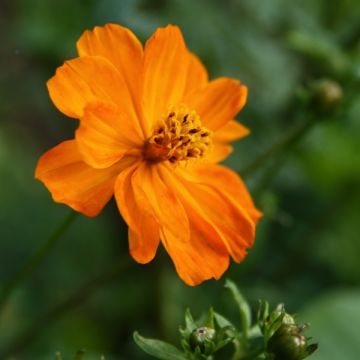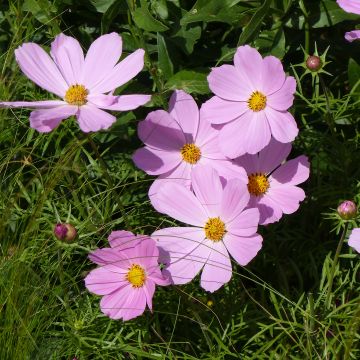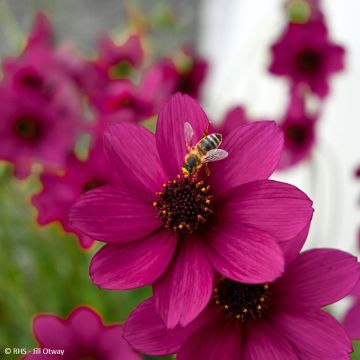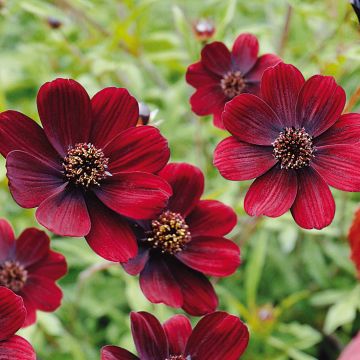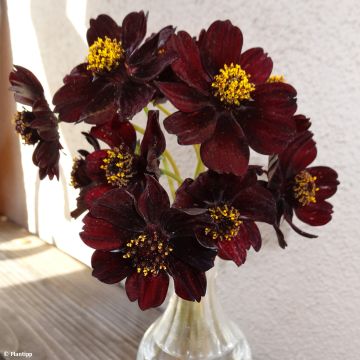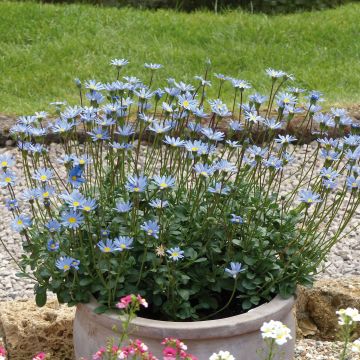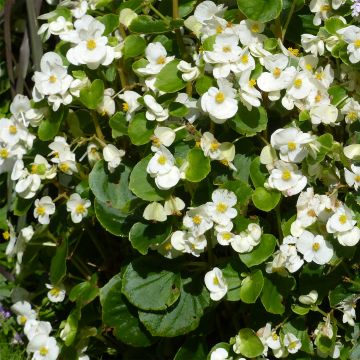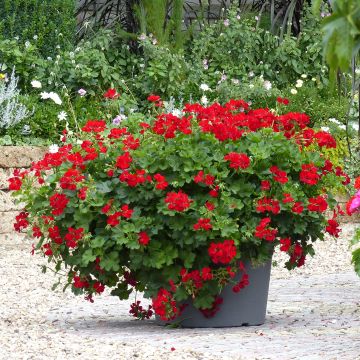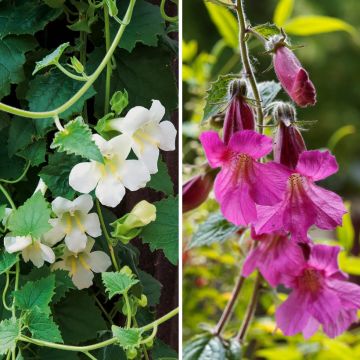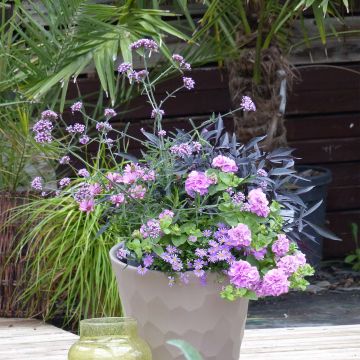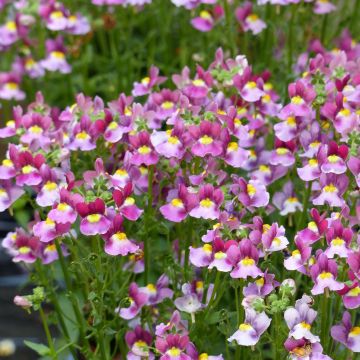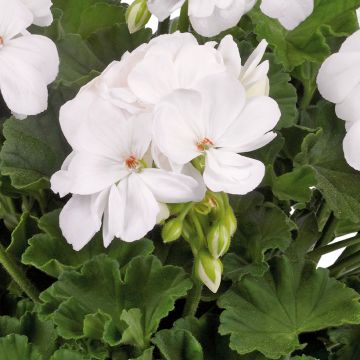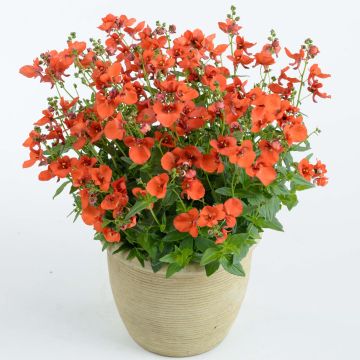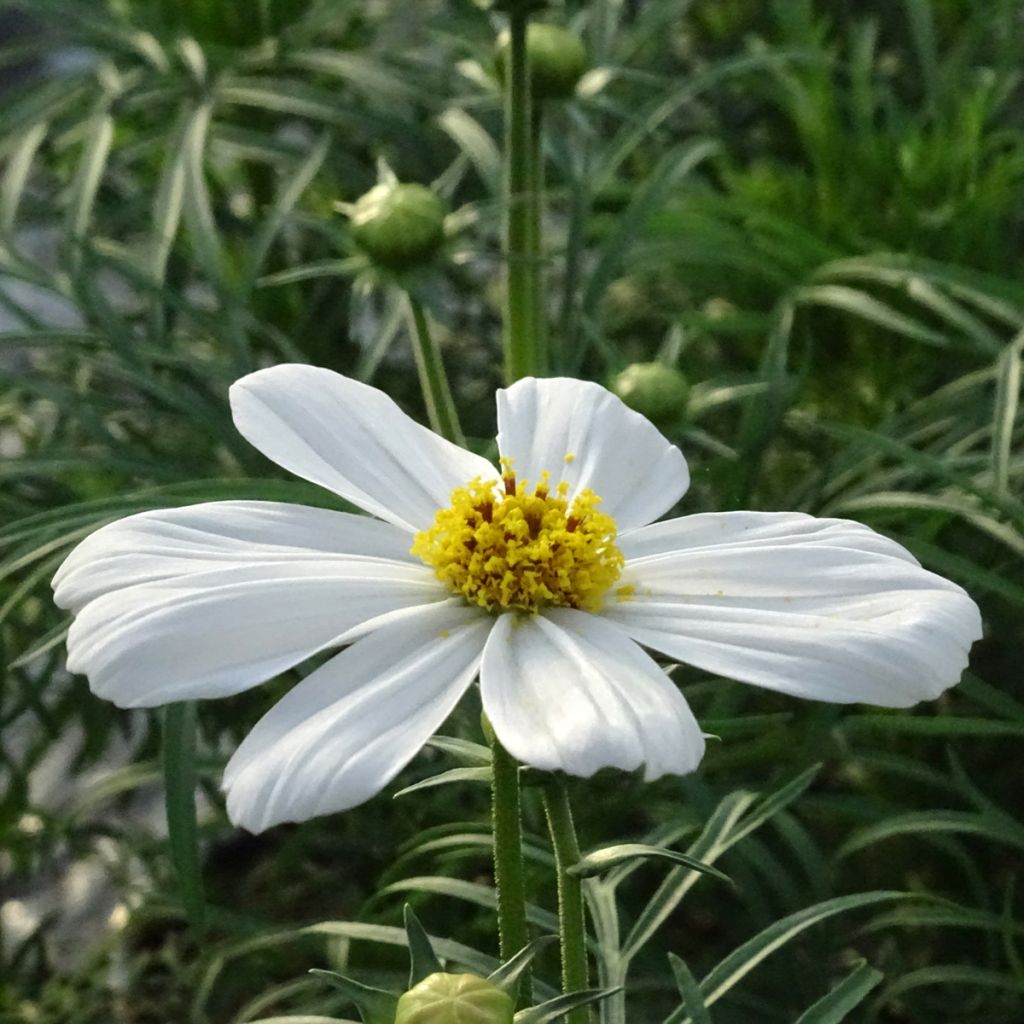

Cosmos bipinnatus Sonata White
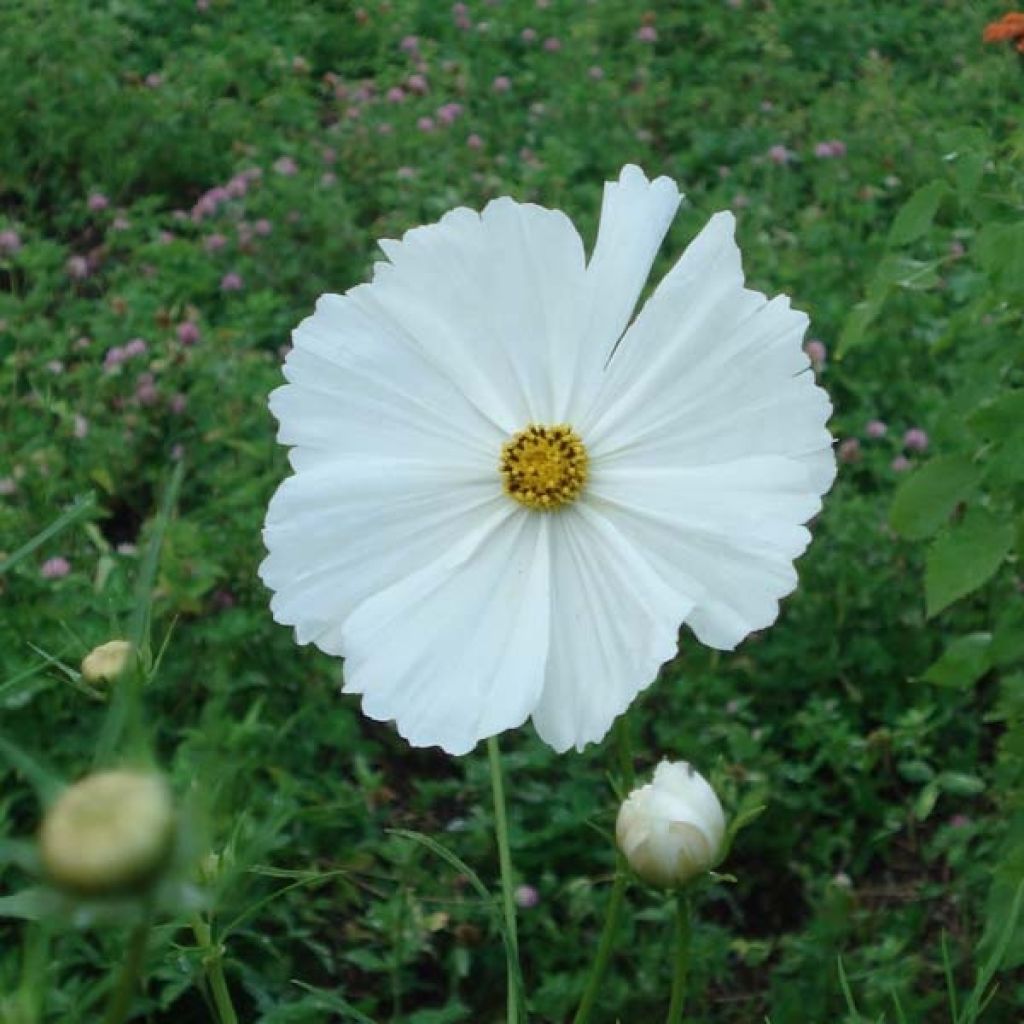

Cosmos bipinnatus Sonata White
Cosmos bipinnatus Sonata White
Cosmos x bipinnatus Sonata White
Garden Cosmos, Mexican Aster
This item cannot be shipped to the selected country
Delivery charge from €5.90
Delivery charge from €5.90
Delivery charge from €5.90
More information
Schedule delivery date,
and select date in basket
This plant carries a 6 months recovery warranty
More information
We guarantee the quality of our plants for a full growing cycle, and will replace at our expense any plant that fails to recover under normal climatic and planting conditions.
From €5.90 for pickup delivery and €6.90 for home delivery
Express home delivery from €8.90.
From €5.90 for pickup delivery and €6.90 for home delivery
Express home delivery from €8.90.
From €5.90 for pickup delivery and €6.90 for home delivery
Express home delivery from €8.90.
Does this plant fit my garden?
Set up your Plantfit profile →
Description
Cosmos bipinnatus Sonata White is an annual plant native to Mexico with very finely cut foliage. Throughout the summer it bears continuous blooms of large, simple and airy flowers measuring 6 to 8 cm (3.1 in) in diameter, with a wide cup of immaculate white with a yellow centre. This early variety is compact, allowing for cultivation in flowerbeds and large containers. It is easy to grow in moderately moist to dry, well-drained and not too rich soil, in a sunny site for optimal flowering.
Cosmos bipinnatus, more commonly known as Garden Cosmos or cosmea, is an annual species in the Asteraceae family (formerly Compositae). This plant is found in Central America, from Costa Rica to the southern United States, passing through Mexico. It thrives in open areas, particularly disturbed habitats such as rocky areas or road edges. Cultivated for a long time in its native area and beyond, it has escaped from gardens and significantly expanded its range, especially in warm and sunny climates. The long, downy stems are adorned with finely cut leaves about ten centimeters long, and can sometimes reach up to 2 m (6 in 7 ft) under optimal conditions. The flowers are typical of the family and are actually compound clusters consisting of tubular flowers (in the center), which will produce seeds, and ligulate flowers (the "petals") delicately notched at the tip, which serve to attract pollinators. Cosmos bipinnatus Sonata White belongs to the Sonata series, characterised by semi-compact and branching plants, reaching about 60 cm (23.6 in) in height and 30 cm (11.8 in) in width. Robust and floriferous, Sonata White produces large flowers, often reaching 7 cm (2.8 in) in diameter, with a pure white colour and a golden yellow centre.
Cosmos bipinnatus Sonata White prefers full sun and is resistant to light frosts. Provide it with a moderately moist to dry, well-drained substrate that is not too rich. In soil that is too rich in nitrogen, the plant tends to produce dark green foliage on elongated and less rigid stems, and flowering tends to be reduced. It is used in gardens to quickly decorate flower beds and borders, or to enhance large containers. It is also suitable as cut flowers. To support flowering, remove faded blooms as they appear. Only plant young plants in the ground when the risk of late frosts has passed. Sowing can be done in trays in late winter. Be advised, young leaves are enjoyed by slugs! Cosmos Sonata White will form a short-lived but charming association with other plants that thrive in warm and slightly dry soils, such as purple toadflax, feather grass, Buenos Aires verbena, or 'Gold Star' rudbeckia.
Please note that our young plants in mini-plugs are professional products intended for experienced gardeners: upon receipt, transplant and store them under shelter (veranda, greenhouse, frame) at a temperature above 14C° for a few weeks before planting outside once all risk of frost has passed.
Report an error about the product description
Cosmos bipinnatus Sonata White in pictures
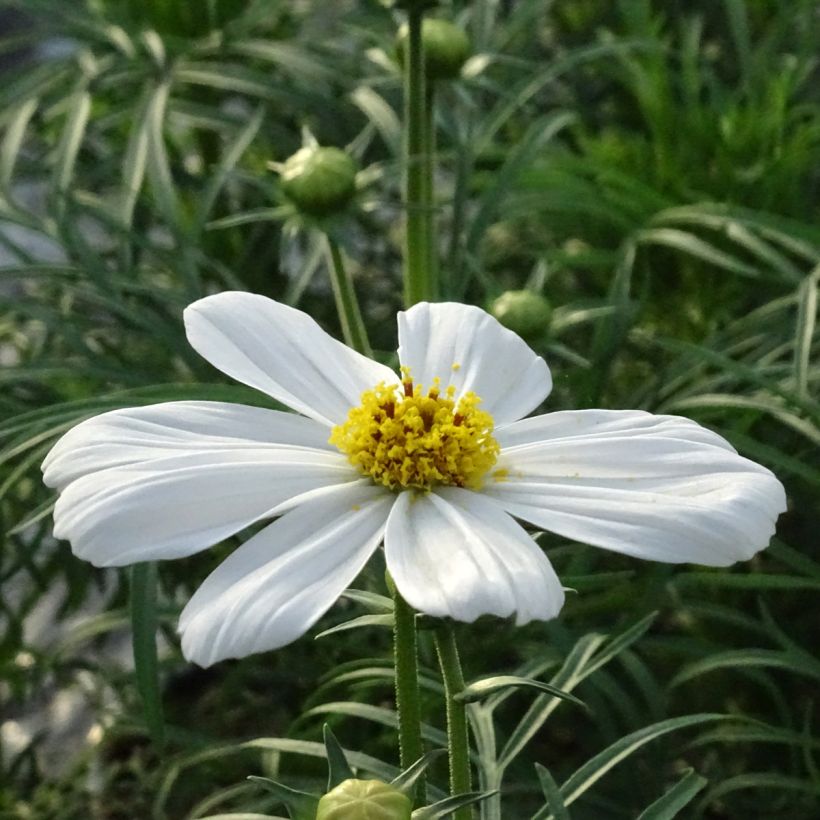

Flowering
Foliage
Plant habit
Botanical data
Cosmos
x bipinnatus
Sonata White
Asteraceae
Garden Cosmos, Mexican Aster
Cultivar or hybrid
Other Cosmos
Planting and care
Cosmos Sonata White enjoys the sun and is easy to grow. Place in a moderately fertile neutral soil that is moist but well-drained. Plant during spring (May to June) for blooms from June to October. Remove faded blooms to prolong flowering. Water well and apply mulch. Cosmos bipinnatus can be susceptible to botrytis disease (grey mould) and slugs and aphids.
Planting period
Intended location
Care
-
, onOrder confirmed
Reply from on Promesse de fleurs
Plug plants - Annuals
Haven't found what you were looking for?
Hardiness is the lowest winter temperature a plant can endure without suffering serious damage or even dying. However, hardiness is affected by location (a sheltered area, such as a patio), protection (winter cover) and soil type (hardiness is improved by well-drained soil).

Photo Sharing Terms & Conditions
In order to encourage gardeners to interact and share their experiences, Promesse de fleurs offers various media enabling content to be uploaded onto its Site - in particular via the ‘Photo sharing’ module.
The User agrees to refrain from:
- Posting any content that is illegal, prejudicial, insulting, racist, inciteful to hatred, revisionist, contrary to public decency, that infringes on privacy or on the privacy rights of third parties, in particular the publicity rights of persons and goods, intellectual property rights, or the right to privacy.
- Submitting content on behalf of a third party;
- Impersonate the identity of a third party and/or publish any personal information about a third party;
In general, the User undertakes to refrain from any unethical behaviour.
All Content (in particular text, comments, files, images, photos, videos, creative works, etc.), which may be subject to property or intellectual property rights, image or other private rights, shall remain the property of the User, subject to the limited rights granted by the terms of the licence granted by Promesse de fleurs as stated below. Users are at liberty to publish or not to publish such Content on the Site, notably via the ‘Photo Sharing’ facility, and accept that this Content shall be made public and freely accessible, notably on the Internet.
Users further acknowledge, undertake to have ,and guarantee that they hold all necessary rights and permissions to publish such material on the Site, in particular with regard to the legislation in force pertaining to any privacy, property, intellectual property, image, or contractual rights, or rights of any other nature. By publishing such Content on the Site, Users acknowledge accepting full liability as publishers of the Content within the meaning of the law, and grant Promesse de fleurs, free of charge, an inclusive, worldwide licence for the said Content for the entire duration of its publication, including all reproduction, representation, up/downloading, displaying, performing, transmission, and storage rights.
Users also grant permission for their name to be linked to the Content and accept that this link may not always be made available.
By engaging in posting material, Users consent to their Content becoming automatically accessible on the Internet, in particular on other sites and/or blogs and/or web pages of the Promesse de fleurs site, including in particular social pages and the Promesse de fleurs catalogue.
Users may secure the removal of entrusted content free of charge by issuing a simple request via our contact form.
The flowering period indicated on our website applies to countries and regions located in USDA zone 8 (France, the United Kingdom, Ireland, the Netherlands, etc.)
It will vary according to where you live:
- In zones 9 to 10 (Italy, Spain, Greece, etc.), flowering will occur about 2 to 4 weeks earlier.
- In zones 6 to 7 (Germany, Poland, Slovenia, and lower mountainous regions), flowering will be delayed by 2 to 3 weeks.
- In zone 5 (Central Europe, Scandinavia), blooming will be delayed by 3 to 5 weeks.
In temperate climates, pruning of spring-flowering shrubs (forsythia, spireas, etc.) should be done just after flowering.
Pruning of summer-flowering shrubs (Indian Lilac, Perovskia, etc.) can be done in winter or spring.
In cold regions as well as with frost-sensitive plants, avoid pruning too early when severe frosts may still occur.
The planting period indicated on our website applies to countries and regions located in USDA zone 8 (France, United Kingdom, Ireland, Netherlands).
It will vary according to where you live:
- In Mediterranean zones (Marseille, Madrid, Milan, etc.), autumn and winter are the best planting periods.
- In continental zones (Strasbourg, Munich, Vienna, etc.), delay planting by 2 to 3 weeks in spring and bring it forward by 2 to 4 weeks in autumn.
- In mountainous regions (the Alps, Pyrenees, Carpathians, etc.), it is best to plant in late spring (May-June) or late summer (August-September).
The harvesting period indicated on our website applies to countries and regions in USDA zone 8 (France, England, Ireland, the Netherlands).
In colder areas (Scandinavia, Poland, Austria...) fruit and vegetable harvests are likely to be delayed by 3-4 weeks.
In warmer areas (Italy, Spain, Greece, etc.), harvesting will probably take place earlier, depending on weather conditions.
The sowing periods indicated on our website apply to countries and regions within USDA Zone 8 (France, UK, Ireland, Netherlands).
In colder areas (Scandinavia, Poland, Austria...), delay any outdoor sowing by 3-4 weeks, or sow under glass.
In warmer climes (Italy, Spain, Greece, etc.), bring outdoor sowing forward by a few weeks.


































